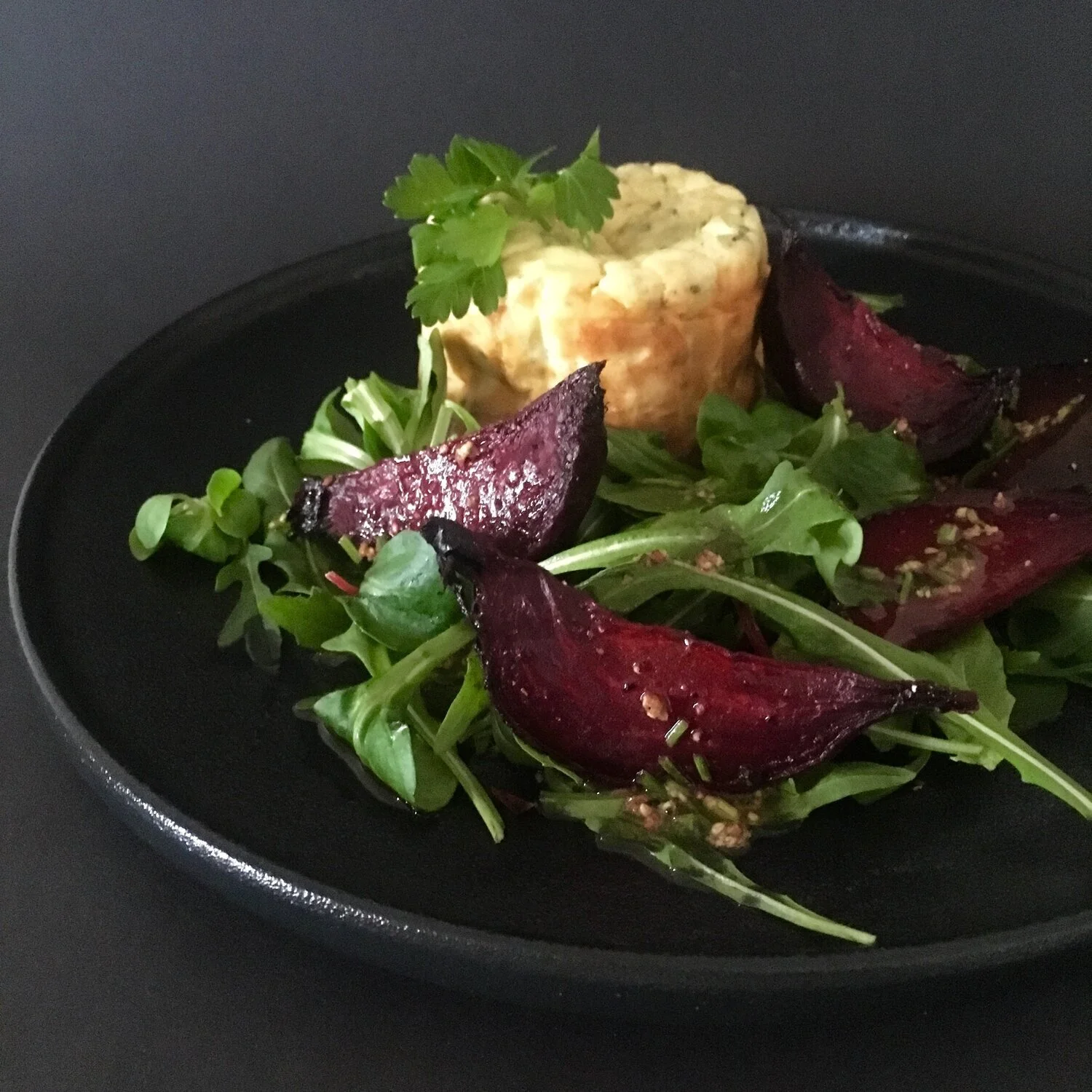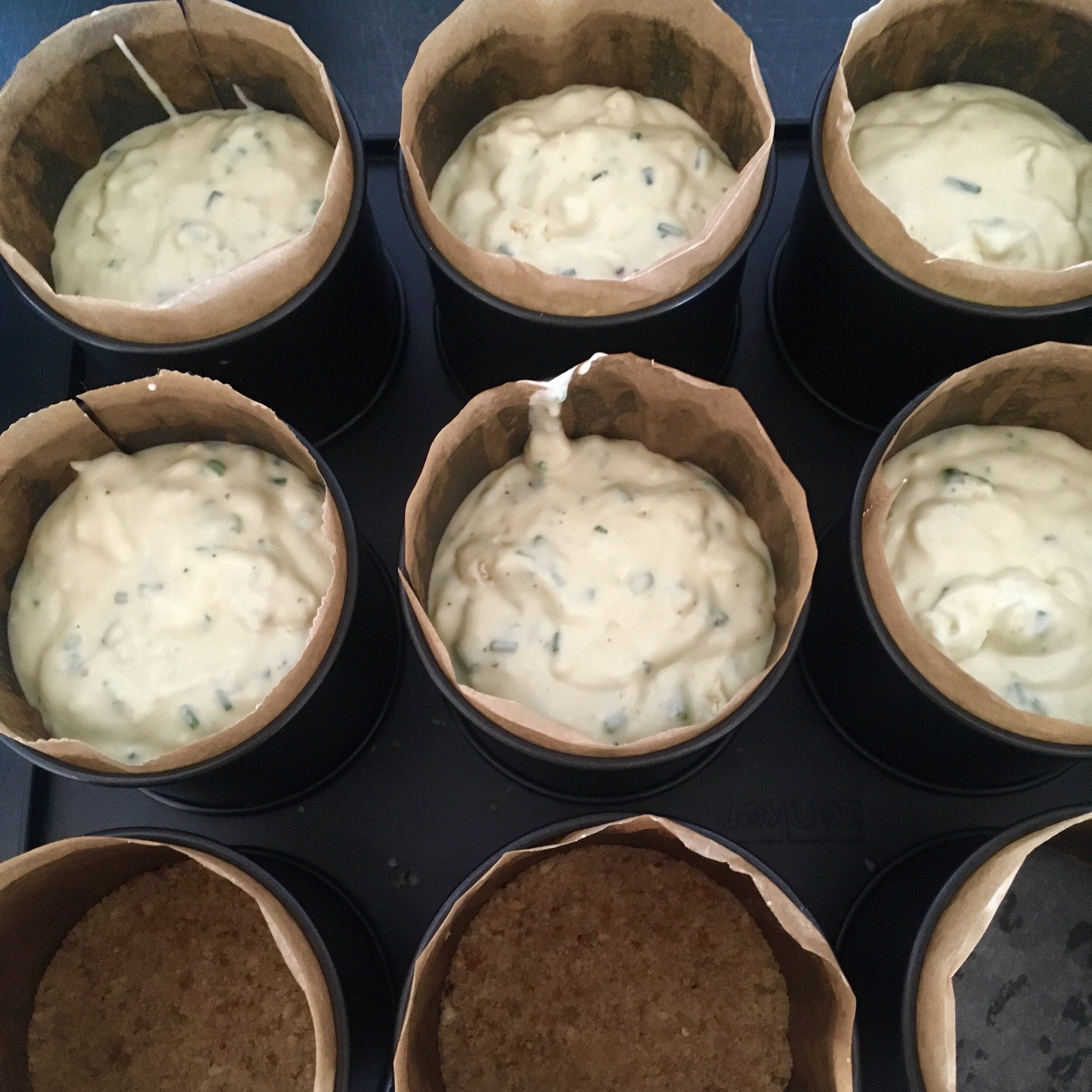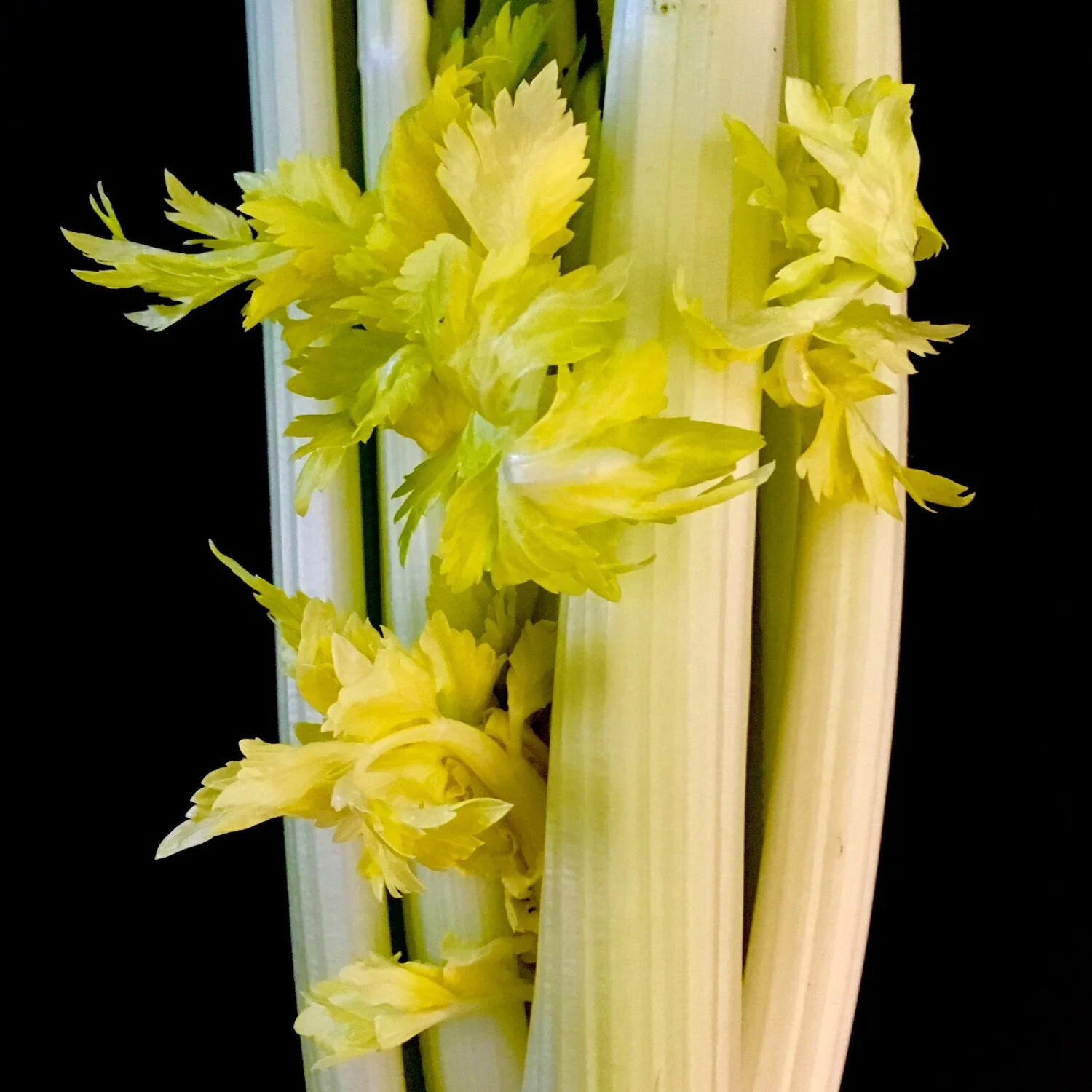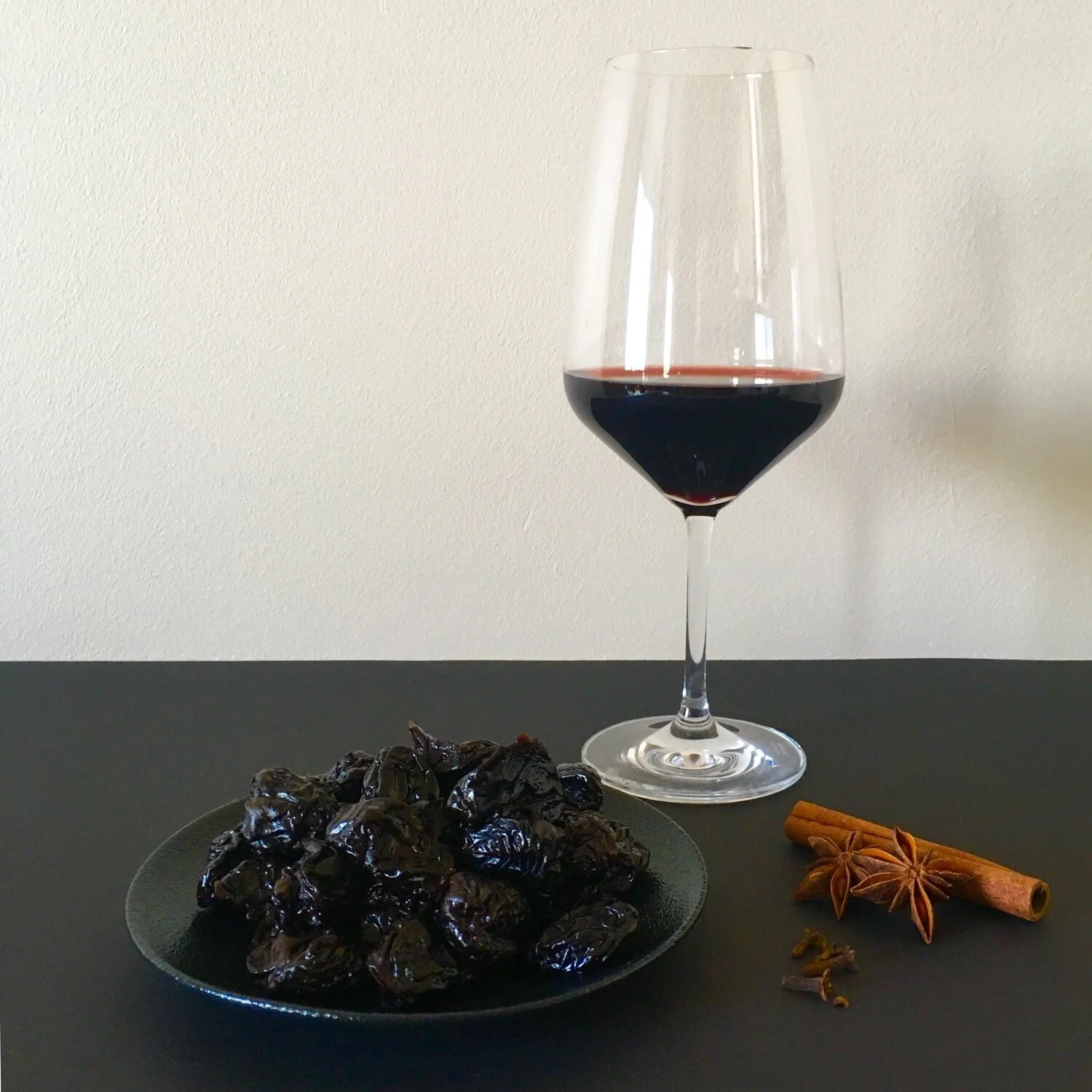Savoury cheesecake with roasted beets
Stale bread can be very versatile to use. I have explored various options already: dumplings (Austrian or Bavarian Knödel), French toast, panzanella (Tuscan bread salad), bread and butter pudding, bread crisps…and many of these things can be made sweet or savoury. However when bread gets too hard one has to be a little bit more creative. My grandparents and my mother had the habit of saving bit of leftover loaves of bread or bread rolls in a container. Once they have saved a fair amount they blitzed it in a food processor to make bread crumbs.
So what do you do with bread crumbs apart from coating meat or vegetables and deep-frying them? I could easily have tempura every day, but once you have gotten to a certain age, you gotta be careful with many delicacies. I have written about a recipe for poor-peoples parmesan, which substitutes the real grated cheese for an economic (but equally tasty) substitute using bread crumbs and butter.
Something I have not considered before is that breadcrumbs make excellent tart bases. Which makes perfect sense, because when you consider making the base of a New York cheesecake out of blitzed oat biscuits and melted butter, you might as well use the same method for dry bread. Blitz it to coarse crumbs and mix with the melted butter as you would for a cheesecake. Add some herbs and/or spices to jazz up the mix and make an even more intriguing crust.
Being a big fan of Ottolenghi I had to get my hands on one of those small individual tart tins that they use at his delis in London. It’s more work greasing them, lining them with parchment paper and filling them, but it looks wonderful on a buffet to have a tray with 10-12 individual tarts. It’s easier to serve than a larger cake, too. Larger cakes often look a bit like a mess once they have been cut and some are simply too soft to get even pieces. I give a method for both individual tins and a larger cake. Feel free to experiment with cheeses. I wanted to serve a salad with roasted beets, so I thought gorgonzola would be a good cheese to use for the cake. It is vital that the cream cheese, eggs, sour cream and cheese have room temperature and that you don’t overmix, otherwise the cake will rise too much and you don’t want a soufflé. It’s also important to leave the cheesecakes in the oven for a little while (leave the oven door ajar).
Savoury cheesecake with roasted beets
700 g cream cheese (full-fat), at room temperature
4 eggs, lightly beaten, at room temperature
200 g gorgonzola, cut into 1 cm cubes, at room temperature
75 g sour cream, at room temperature
100 g flour
20 g chives, sliced into 5 mm rings
2 garlic cloves, crushed
salt and pepper
for the base:
170 g bread crumbs
80 g butter, melted
for the salad:
4 beetroot
mixed salad leaves
6 tablespoons olive oil
1 tablespoon red wine vinegar
5 g chives, sliced into 5 mm rings
1 teaspoon mild mustard
salt and pepper
Preheat the oven to 170 degrees, 150 degrees fan.
Scrub and clean the beetroot. Put in a medium saucepan and cover with water. Bring to a boil and cook for 20-30 minutes depending on the size of the beet root. Test for doneness with a sharp knife. The beetroot will be roasted in the oven for a while, so don’t worry if they seem a bit hard. Strain and let cool, then slice lengthwise into eighths. Put into a roasting tin and drizzle with olive oil, season with salt and pepper and mix. Roast in the preheated oven for 25 minutes. Remove and leave to cool.
Grease and line the bottom and sides of 8 individual tart tins, 8 cm in diameter or the base and sides of one larger tin 23 cm in diameter.
Mix the breadcrumbs with the melted butter. The mixture will look a little like wet sand. Distribute the mix to the tart tins (or larger tin) and even out with the base of a glass or a spoon. If you have one of those espresso stamps, that is a useful tool, too. Place the tins to chill in the fridge for about 30 minutes.
In a standing mixer with the paddle attachment (or use a handheld mixer) mix the cream cheese with the gorgonzola and crushed garlic until smooth, add the sour cream and chives until just combined then gradually add the beaten eggs. Fold in the flour until just combined. Season to taste. It is important not to overmix, you don’t want too much air in the mixture, otherwise it will rise like a soufflé.
Distribute the cheese mix among the tart tins and level out the top with a spoon if need be. Put the tins into the preheated oven and bake for 25 minutes or 55-60 minutes if making a larger cake. The border should be firm and the centre wobble a bit. Don’t worry if it seems a little bit like they are still too runny, they will set when they are cool and when you store them in the fridge. Switch off the oven and leave the cakes inside with the door ajar (I put a cooking spoon in the gap, so it won’t shut). Remove the cakes after 30 minutes (or 1 hour for the larger cake) and leave to cool before storing them in the fridge until ready to serve.
Make the vinaigrette by combining the oil, vinegar, mustard, chives and salt and pepper. Whisk in a bowl or put everything into a jar and shake.
Take the cheesecakes out of the fridge at least half an hour before serving. Mix the salad leaves with the beetroot and dressing and serve alongside the cheesecakes.
Dry bread does not need to be discarded. This bread basket contains an assortment of different kinds: crusts from toast, croissant, white bread and even pretzels.
A food processor is a useful tool here. It manages to turn even bone-dry bread into crumbs. If you don’t have one, you can also use a coarse grater, but it’s a bit of work (and makes more of a mess!).
When bread turns to gold. The usage of bread crumbs is more versatile than you may think.
Greasing, lining and filling the individual tart tins is a bit of work, however serving them is so much easier and your guests will be impressed.








